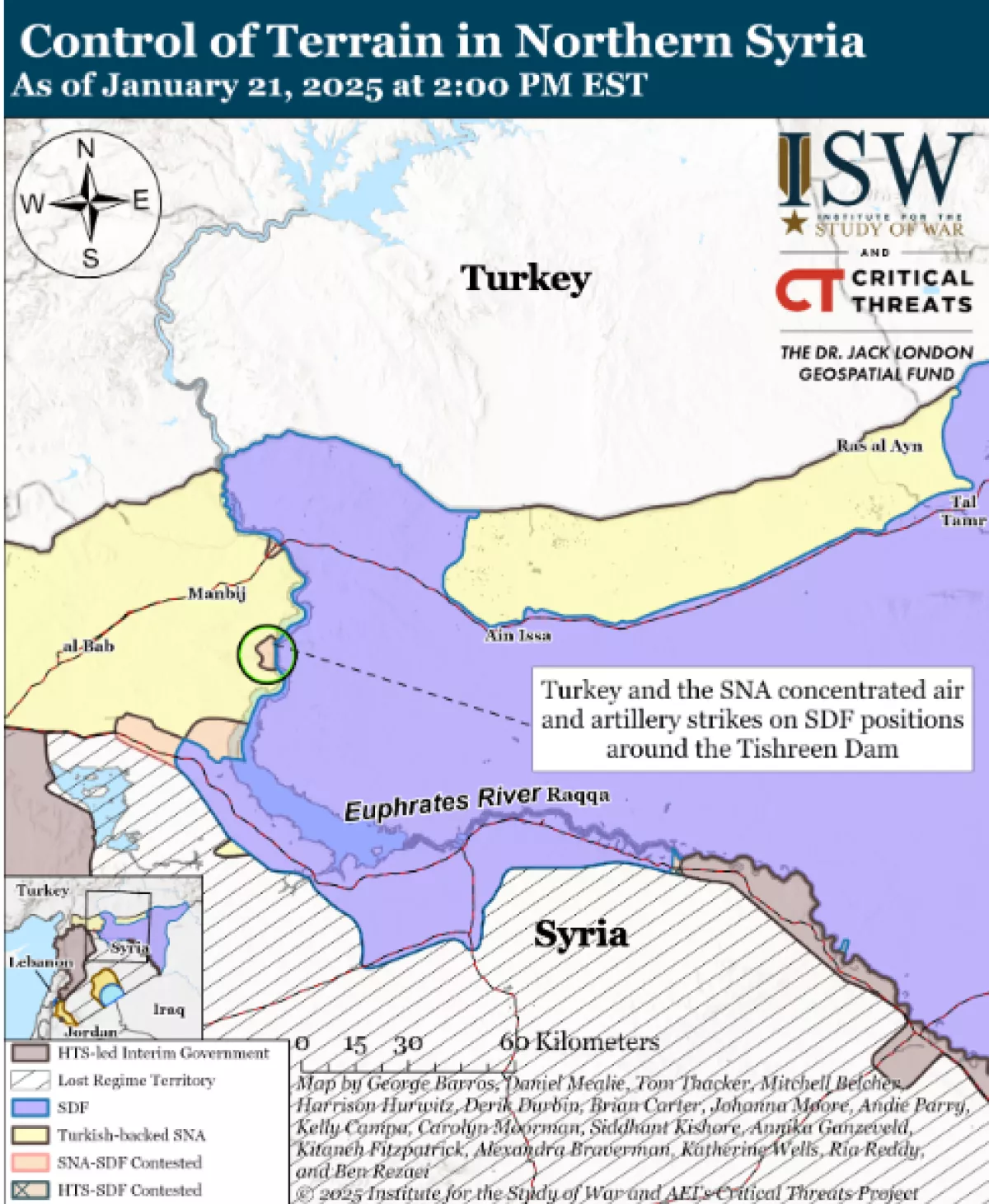ISW: PKK/YPG faces growing threat from Turkish strikes and Arab tribal uprising MAP/VIDEO
The Turkish strikes and rising Arab tribal uprisings are increasingly threatening the PKK/YPG's ability to maintain its defensive positions, as it faces mounting challenges in both resource shortages and logistical difficulties.
These Kurdish forces, part of the US-backed Syrian Democratic Forces (SDF), are engaged in multiple fronts, struggling to fend off separate battles against both Arab tribal factions and the Turkish-backed Syrian National Army (SNA), according to a report by the US-based think tank Institute for the Study of War (ISW), as cited by Caliber.Az.
The situation has become dire for the PKK/YPG, with ongoing battles on the western bank of the Euphrates River against the Turkish-supported SNA and clashes in Deir ez-Zor with Arab tribal forces under Sheikh Ibrahim al-Hifl's command.

ISW's analysis suggests that the SNA has already positioned forces at strategic locations along the Euphrates, including Kobani, Ain Issa, and Tal Tamra. These positions could be part of a planned three-pronged offensive aimed at breaking through PKK/YPG defences on the eastern bank of the river.
As part of ongoing operations, the SNA and Türkiye continue their strikes on key PKK/YPG positions, specifically along vital ground communication routes, in an effort to cut off supplies and reinforcements from the east, effectively isolating the Kurdish forces stationed along the Euphrates. This situation is compounded by Arab tribal attacks, which analysts fear could severely hinder the PKK/YPG's capacity to withstand the Turkish-backed assault.
Arab tribal forces attacked PKK/YPG positions in Deir ez-Zor
On January 21, reports emerged that the PKK/YPG had moved reinforcements from Hasakah to Deir ez-Zor, likely weakening the defence at Tal Tamra in Hasakah province. This move risks leaving PKK/YPG positions in Tal Tamra more exposed to an attack from the SNA, should any reserves or forward positions be overextended. ISW experts further believe the withdrawal of PKK/YPG forces from Hasakah opens the door to potential Turkish or SNA control of the area, depending on how many reinforcements were diverted to other fronts.
While ISW cannot pinpoint the exact locations of the redeployed PKK/YPG forces in Hasakah, it is clear that this shift further strains the already fragile supply lines for the Kurdish forces.

As of now, the PKK/YPG has bolstered its presence in Dhiban, Tayyan, Qasr, and Hajin in Deir ez-Zor province, likely to defend against further incursions from the SNA and Türkiye.
The Turkish and SNA forces have ramped up their air and artillery strikes, particularly around the Teshreen Dam area, intensifying pressure on the Kurdish units.
Turkish F-16s conducted airstrikes against PKK/YPG positions in the Teshreen Dam area
Large SNA forces are also positioned along lines of control in Ain Issa and Kobani, raising concerns that two simultaneous offensives could soon target and dismantle the PKK/YPG’s defences on the eastern bank of the Euphrates.

ISW concludes that the continuous Turkish and SNA strikes are further isolating PKK/YPG units near critical ground lines of communication in northern Syria, particularly around the Kara Kozak Bridge, adding more uncertainty to the outcome of this ongoing conflict.
As the situation unfolds, the PKK/YPG may struggle to hold its ground without significant shifts in strategy or additional external support.
By Tamilla Hasanova








